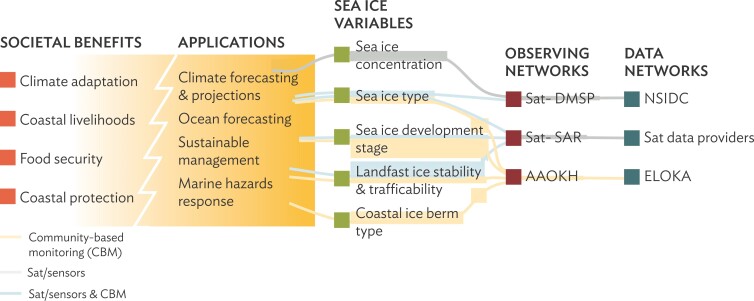Figure 2.
Example of observing network design and implementation viewed through the lens of a top-down, global observing framework approach (Starkweather et al. 2018). In this figure the GOOS Framework on Ocean Observing (Lindstrom et al. 2012) has been applied to Arctic sea-ice observations. Definition of the upper three sea ice variables was through a top-down, scientist-driven process that interfaced with mission agencies (e.g., national ice and climate services) for specific applications such as shipping or large-scale climate assessments. Note that some sea ice variables serve local community information needs, in particular if collected through CBM efforts and at scales relevant to community ice uses, illustrated by the lower two variables that build on CBM efforts through the Alaska Arctic Observatory and Knowledge Hub (AAOKH) and the Exchange for Local Observations and Knowledge of the Arctic (ELOKA). Abbreviations: DMSP, Defense Meteorological Satellite Program; SAR, synthetic-aperture radar; NSIDC, National Snow and Ice Data Center.

